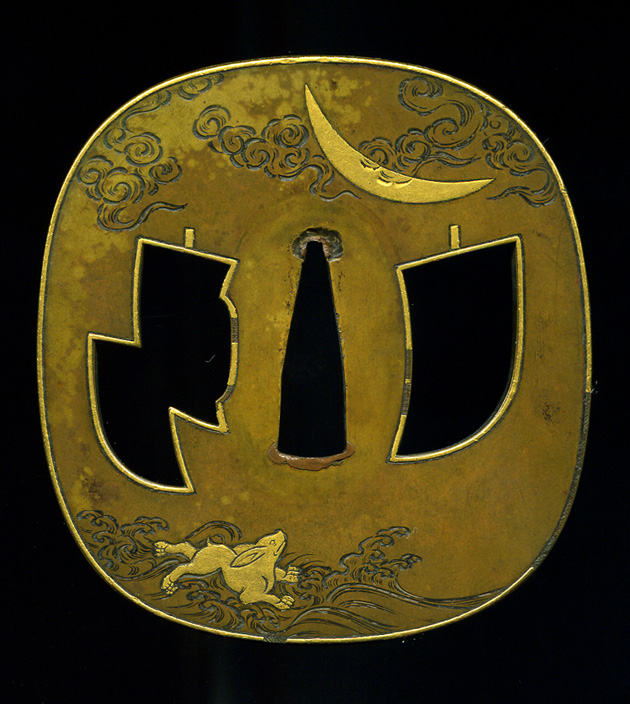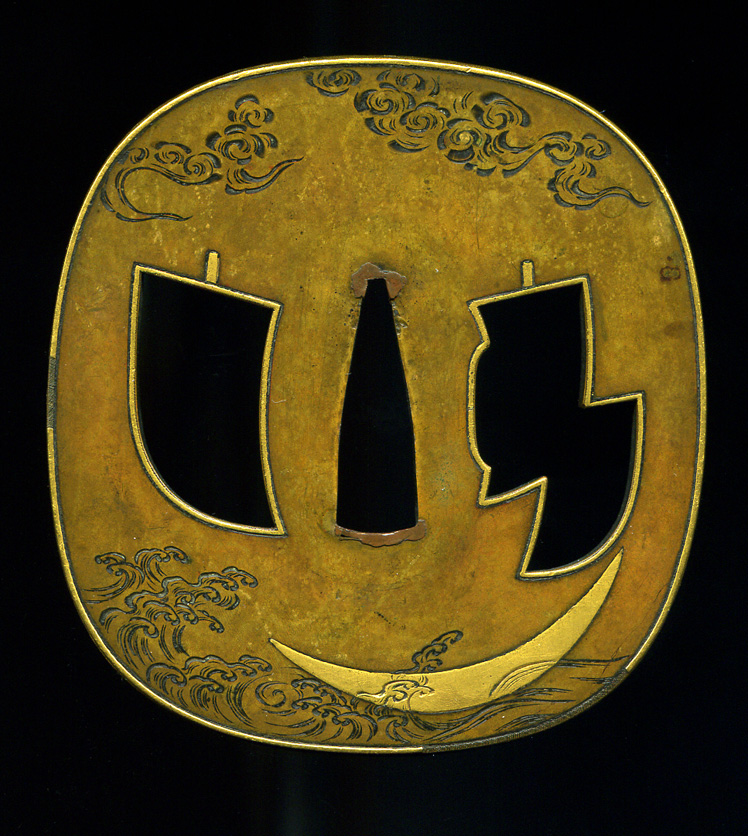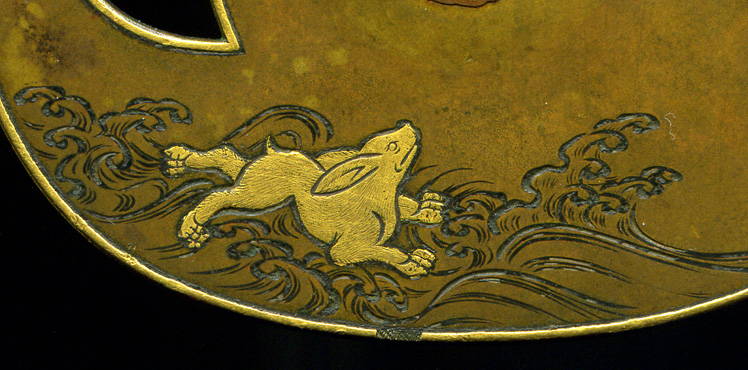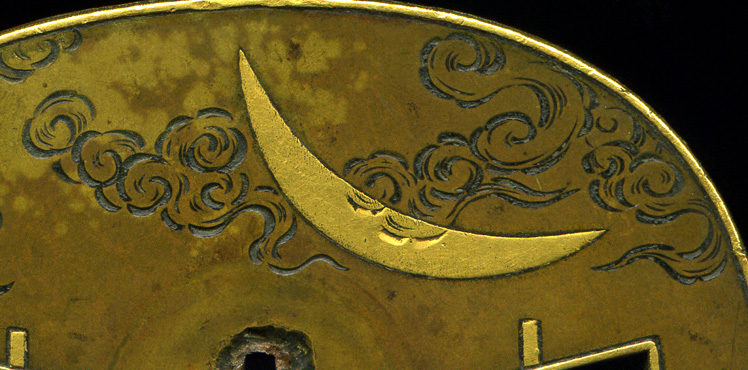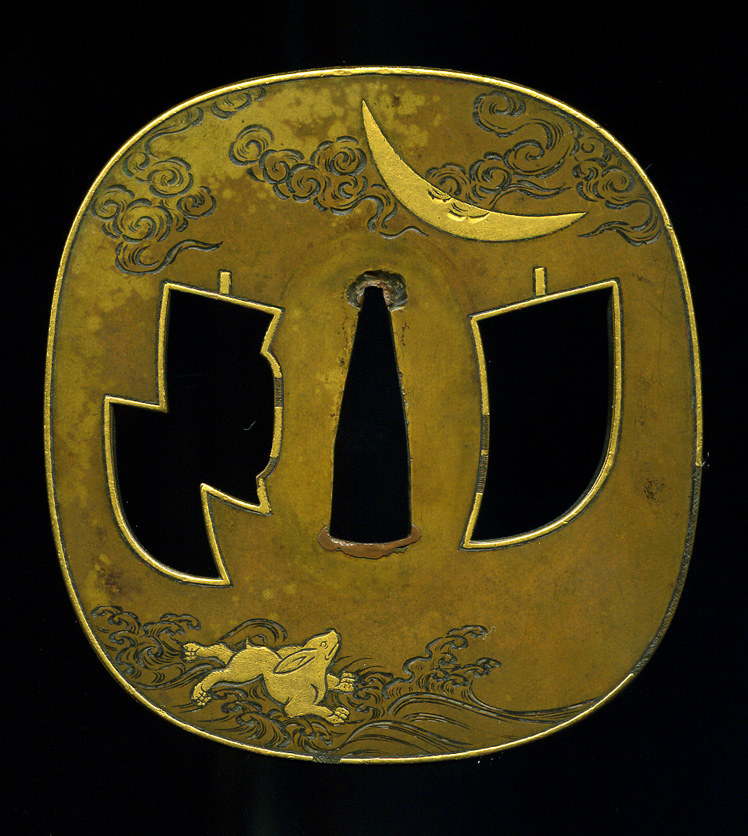| Description |
Large tsuba that is representative of the feeling from the Momoyama period. It was during this time that people sometimes felt extravagant enjoying their new wealth and positions after the civil war era. Tsuba such as this were special ordered (thus the rare design of rabbit and moon) with themes that were enjoyable in such a setting (peacetime). The tsuba is very nice, made very elegant with its gold foiled rim and its thin kasane. These are signs that it was made most likely for someone of a higher status. The use of gold uttori rather than gold plate also shows the free use of expensive materials. The inner hitsu are also lined with gold smartly depicting sails of boats. Fine kiribori is done for the background design of clouds and waves. This is all done in the style of the Momoyama Umetada School.Top grade Umetada pieces are very rare, and this subject is even more rare. In a custom fitted box.
The theme of the rabbit and moon is explained in this segment from Wikipedia “n the Buddhist story "Sasajâtaka" (Jataka Tales: no.316)[1], one of the Jataka Tales, a monkey, an otter, a jackal, and a rabbit resolved to practice charity on the Uposatha, believing a demonstration of great virtue would earn a great reward.
When an old man begged for food, the monkey gathered fruits from the trees and the otter collected dead fish from the river bank, while the jackal wrongfully pilfered a lizard and a pot of milk-curd. The rabbit, who knew only how to gather grass, instead offered its own body, throwing itself into a fire the man had built. The rabbit, however, was not burnt. The old man revealed himself to be Sakra, and touched by the rabbit's virtue, drew the likeness of the rabbit on the moon for all to see. It is said the lunar image is still draped in the smoke that rose when the rabbit cast itself into the fire.
A version of this story can be found in the Japanese anthology Konjaku Monogatarishu, where the rabbit's companions are a fox and a monkey.
Similar legends occur in Mexican folklore, where people also identified the markings on the moon as a rabbit. According to an Aztec legend, when the god Quetzalcoatl lived in Earth as a man, he started a journey. After walking for a long time, he became hungry and tired. With no food or water around, he thought he would die. Then, a rabbit grazing nearby offered himself as food to save his life. Quetzalcoatl, moved by the rabbit's noble offering, elevated the rabbit to the moon, then lowered him back to Earth, and told him, "You may be just a rabbit, but everyone will remember you; there is your image in light, for all men and for all times."
Another Mesoamerican legend tells of the brave and noble sacrifice of Nanahuatzin during the creation of the fifth sun. Humble Nanahuatzin sacrificed himself in fire to become the new sun, but the wealthy god Tecciztecatl hesitated four times before he finally set himself alight to become the moon. Due to Tecciztecatl's cowardice, the gods felt that the moon should not be as bright as the sun, so one of the gods threw a rabbit at his face to diminish his light. It is also said that Tecciztecatl was in the form of a rabbit when he sacrificed himself to become the moon, casting the shadow of a rabbit.
|
|
